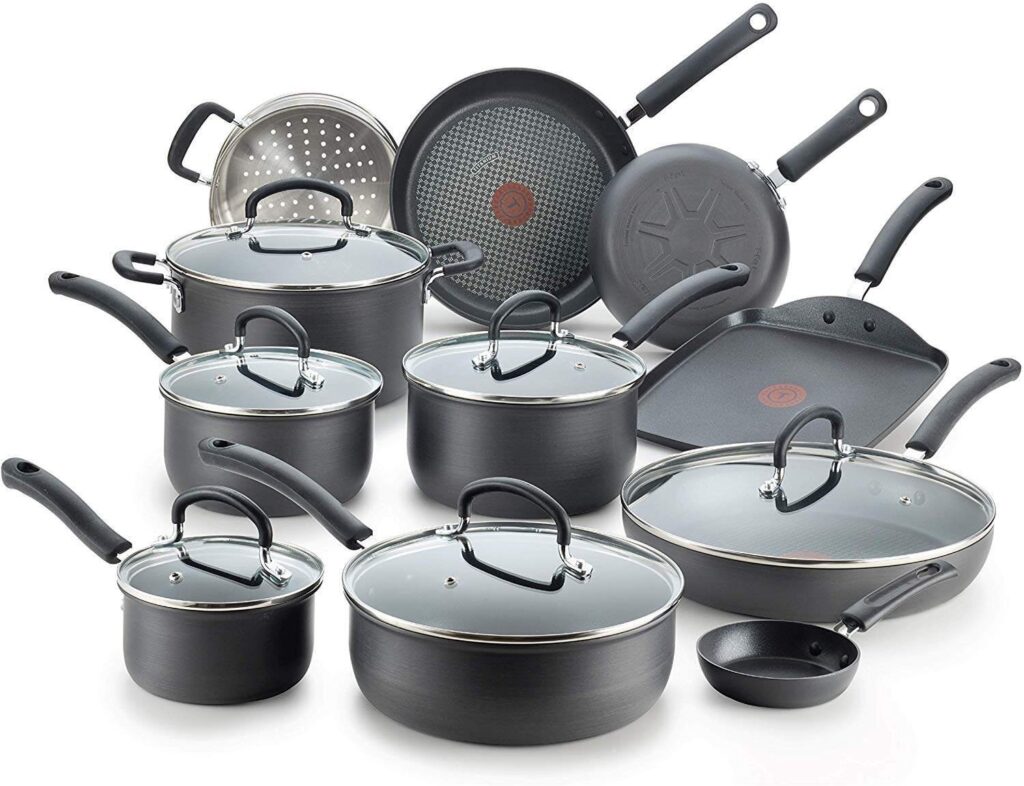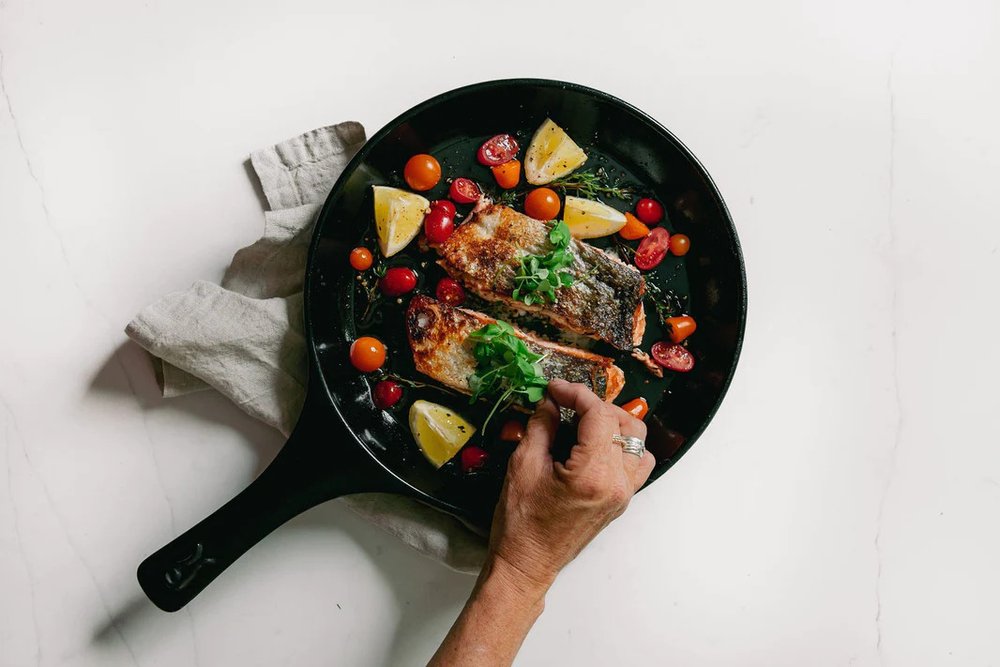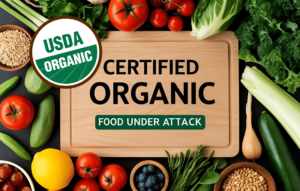In our journey towards holistic well-being, we often focus on nutritious diets, regular exercise, and mindful practices. However, there’s another crucial aspect of our daily lives that deserves our attention: the cookware we use. The importance of non-toxic cookware cannot be understated when it comes to safeguarding our health and embracing an eco-friendly lifestyle.
Cookware has a direct influence on the safety of the food we consume. Traditional options, such as non-stick coatings and certain metal alloys, may release harmful chemicals and toxins into our meals when subjected to high heat. These substances, such as per- and polyfluoroalkyl substances (PFAS), have been linked to various health concerns ranging from hormonal disruptions to organ damage.
In this blog, we delve into the significance of non-toxic cookware options and their impact on our overall well-being and the environment. By understanding the potential risks associated with traditional cookware materials and exploring alternative non-toxic choices, we can make informed decisions that prioritize our health and contribute to a sustainable future.

Why Is Non-Toxic Cookware Important?
The use of non-toxic cookware is essential to maintain good health. The majority of traditional cookware, including non-stick, aluminum, and Teflon, contain harmful chemicals that can leach into food when heated. These chemicals can cause a range of health problems, including cancer, infertility, and developmental problems in children.
Furthermore, the materials used in non-toxic cookware do not react with food, which means that the food’s natural flavors and nutrients are preserved. This is especially important for individuals who are health-conscious and want to ensure that they are getting all the necessary nutrients from their food.
Toxic cookware has become a growing concern in recent years as researchers have identified a number of health issues that can be caused by exposure to certain materials commonly used in cookware. Here are some of the health issues associated with toxic cookware and the research that supports them.
Aluminum: Aluminum is a lightweight, affordable metal that is often used in cookware because of its excellent heat conductivity. However, research has found that exposure to aluminum can be harmful to human health. A 2013 study published in the journal Environmental Science: Processes & Impacts found that long-term exposure to high levels of aluminum has been linked to several negative health effects, including respiratory issues, bone disorders, gastrointestinal problems, and neurological disorders such as Alzheimer’s disease and cognitive decline.
One study from the Journal of Environmental Science found that cooking with aluminum cookware resulted in significantly higher levels of heavy metal contamination in food compared to other types of cookware. When acidic foods are cooked in aluminum pots and pans, the metal can leach into the food, potentially leading to increased levels of aluminum exposure in the body.
Additionally, research suggests that the use of aluminum cookware can lead to a buildup of aluminum in the body over time. For these reasons, it is recommended that individuals avoid using aluminum cookware in the kitchen and instead consider using safer alternatives that we will discuss shortly.
Non-Stick Coatings: Non-stick coatings like Teflon have been linked to a number of negative health effects. When heated, these coatings can release toxic fumes that can cause flu-like symptoms in humans and be lethal to birds. Additionally, the chemicals used to make these coatings, such as perfluorooctanoic acid (PFOA), have been linked to cancer, hormonal imbalances, and developmental problems. PFOA and related chemicals are persistent in the environment and can accumulate in the body over time, leading to long-term health effects. The use of non-stick cookware has declined in recent years due to these concerns, and many companies have phased out the use of PFOA in their products. However, some non-stick coatings may still contain other harmful chemicals, so it is important to research and choose safer alternatives.
Copper: While copper cookware is widely used in the culinary world due to its excellent heat conductivity and aesthetic appeal, it is important to be aware of the potential health risks associated with its use. Copper is a heavy metal that is essential for our health in small amounts, but can be harmful when ingested in excessive amounts. When acidic foods are cooked or stored in copper pots and pans, the copper can leach into the food, potentially leading to increased levels of copper exposure in the body. This can be particularly dangerous for individuals with Wilson’s disease, a rare genetic disorder that causes the body to accumulate copper, as it can lead to liver and brain damage. In addition to copper toxicity, long-term exposure to copper can also lead to other health issues such as gastrointestinal problems, anemia, and kidney damage.
One study even found that copper and non-stick coatings caused significant loss of certain nutrients. The researchers concluded that cookware material can not only cause disease but also has a serious impact on the nutritional quality of food.
Cadmium: Cadmium is a toxic heavy metal that is commonly found in cookware and can pose serious health risks to individuals who are exposed to it. As a toxic metal that can accumulate in the body over time, cadmium leads to health problems such as kidney damage, osteoporosis, and cancer.
Cadmium is often used in the manufacturing of cookware as a coating or a pigment, particularly in inexpensive or low-quality cookware products. While it is used in cookware because it is a durable and heat-resistant metal that can withstand high cooking temperatures, it can leach into food and beverages, and if ingested over time, can lead to cadmium poisoning.
Cadmium is a known carcinogen, and long-term exposure to high levels of cadmium has been linked to cancer of the lung, prostate, and bladder. In addition to cancer, cadmium exposure can cause kidney damage and osteoporosis, as it can interfere with the body’s ability to absorb calcium. Symptoms of acute cadmium poisoning can include nausea, vomiting, abdominal pain, and muscle cramps. It’s very important to note that even “healthy”, ceramic options of cookware will often secretly have cadmium included in their design.
Per- and Polyfluoroalkyl Substances (PFAs): PFAs are a group of man-made chemicals known for their water- and grease-resistant properties, which have come under scrutiny due to their potential health and environmental impacts. The presence of PFAs in cookware has raised concerns about their potential effects on human health and food safety. Extensive research has been conducted to assess the risks associated with PFAs exposure and to provide guidance for consumers.
Studies indicate that certain types of nonstick cookware, particularly those coated with polytetrafluoroethylene (PTFE), can release PFAs when exposed to high heat. These chemicals can then contaminate food and enter the human body. PFAs have been associated with adverse health effects, including potential impacts on the immune system, liver, thyroid, and developmental issues in infants and children.
It is important to note that while many types of cookware can be potentially toxic, the risk of exposure can be reduced by using safer alternatives, such as stainless steel, ceramic, or cast iron. Additionally, it is important to use caution when cooking with acidic foods, as this can cause certain types of cookware, such as cast iron, to release metals into the food. By being mindful of the cookware we use, we can reduce our exposure to harmful chemicals and protect our health.
Best Non-Toxic Cookware Options
With a wide range of materials available, each with its own unique characteristics, understanding the pros and cons of different non-toxic cookware options is essential. Let’s dive into various materials commonly used in non-toxic cookware, highlighting their positives and negatives to help you make an informed decision.

Ceramic Cookware: Pros – Ceramic cookware is non-reactive and does not leach chemicals into food. It provides even heat distribution, retains heat well, and is aesthetically appealing. Many ceramic coatings are free from PTFE and PFOA, offering a non-stick cooking experience without the potential health concerns.
Cons – Ceramic cookware may be prone to chipping or cracking if mishandled or made with poor-quality ceramic. It can be less durable than other materials, and the non-stick properties may diminish over time if not sourced properly. Additionally, many ceramic cookware options that claim to be non-toxic still have lead, cadmium, and PFAs in them. It’s always important to do your homework before purchasing anything (see the section below for the best ceramic cookware option).
Stainless Steel Cookware: Pros – Stainless steel is durable, resistant to rust and corrosion, and does not leach metals into food. It offers excellent heat conductivity and is compatible with various cooking surfaces, including induction. Additionally, it is relatively easy to clean and maintain.
Cons – Stainless steel can have uneven heat distribution, leading to hot spots. Some foods may stick to the surface, requiring the use of oil. It is advisable to choose high-quality stainless steel cookware to ensure durability and avoid potential issues with nickel leaching for individuals with nickel allergies.
Cast Iron Cookware: Pros – Cast iron is renowned for its excellent heat retention, even heat distribution, and natural non-stick properties when correctly seasoned. It adds trace amounts of iron to food, which can be beneficial for individuals with iron deficiencies. Cast iron is highly durable and versatile, suitable for stovetop and oven use.
Cons – Cast iron cookware requires regular seasoning to maintain its non-stick surface and prevent rust. It can be heavy and may take longer to heat up than other materials. Acidic foods can interact with iron and alter the taste, and it may not be suitable for individuals with iron overload conditions.
Glass Cookware: Pros – Glass cookware is non-reactive and does not leach chemicals into food. It is versatile, allowing for baking, roasting, and serving. Glass is transparent, making it easy to monitor the cooking process. It is dishwasher-safe and relatively easy to clean.
Cons – Glass cookware takes longer to heat up and may not distribute heat as evenly as other materials. Sudden temperature changes can cause the glass to shatter, so it requires careful handling. While some glass cookware comes with non-stick coatings, they may not be as effective as other materials.

My Choice of Non-Toxic Cookware – Xtrema Ceramic Cookware
When my wife and I were scouring the market for non-toxic cookware options, Xtrema (use code “kyletothemoon” to save 15%) stood out as a leading brand with its exceptional quality standard. With a commitment to providing safe and healthy cooking solutions, Xtrema offers a range of cookware that combines the benefits of ceramic material with innovative design. Let’s explore why Xtrema ceramic cookware is considered one of the best non-toxic options available.
100% Pure Ceramic Construction: Xtrema cookware is crafted from 100% pure ceramic—no metals, glazes, or toxic chemicals are used in the manufacturing process. This ensures that no harmful substances leach into your food, providing peace of mind for health-conscious individuals. The purity of Xtrema’s ceramic construction makes it an excellent choice for those with sensitivities or allergies to other materials.
Unparalleled Heat Distribution: Ceramic material is known for its exceptional heat retention and distribution properties, and Xtrema cookware capitalizes on these characteristics. It delivers consistent and even heat distribution, eliminating hot spots that can lead to uneven cooking. This feature allows you to achieve perfect results with every meal, whether you’re simmering sauces or searing steaks.
Versatility in Cooking: Xtrema’s ceramic cookware is incredibly versatile, designed to be used on a variety of cooking surfaces, including gas, electric, ceramic, and induction stovetops, as well as in the oven and microwave. This flexibility makes Xtrema cookware a convenient choice for any cooking style or recipe, allowing you to seamlessly transition from stovetop to oven without the need for multiple pans.
Non-Stick Without Compromise: Xtrema’s ceramic cookware boasts a naturally non-stick surface, eliminating the need for excessive oil or butter during cooking. The smooth ceramic interior ensures that food effortlessly releases, making cleanup a breeze. Unlike traditional non-stick coatings that may degrade over time, Xtrema’s non-stick properties remain intact, providing long-lasting performance.
Easy to Clean and Maintain: Maintaining Xtrema cookware is hassle-free. Its non-porous ceramic surface is resistant to staining and doesn’t retain odors, making it easy to clean with a gentle sponge or cloth. Xtrema cookware is also dishwasher-safe, allowing for effortless cleanup when desired.
Sustainable and Environmentally Friendly: Xtrema’s commitment to sustainability extends beyond its non-toxic construction. The brand prioritizes eco-friendly manufacturing practices, minimizing waste and reducing its environmental footprint. By choosing Xtrema ceramic cookware, I’m making a conscious choice to support a brand that values both my health and the planet.
To learn more about the benefits of Xtrema’s ceramic cookware (use code KYLETOTHEMOON to save 15%) and explore the science behind its non-toxic properties, visit their website here. The comprehensive information provided by Xtrema will empower you to make an informed decision and embrace a healthier cooking experience.
Conclusion
In the pursuit of a holistic and health-conscious lifestyle, choosing non-toxic cookware is a crucial step towards safeguarding our well-being and the environment. As we’ve explored in this blog, the importance of non-toxic options cannot be overstated.
Opting for non-toxic cookware, such as Xtrema ceramic cookware, allows us to eliminate potential health risks associated with leaching chemicals and toxins into our food. By investing in cookware made from materials like stainless steel, cast iron, ceramic, or glass, we can create a safer cooking environment for ourselves and our loved ones.
Beyond personal health benefits, choosing non-toxic cookware also contributes to our collective responsibility to protect the environment. By supporting brands that prioritize sustainable manufacturing practices and use eco-friendly materials, we can reduce our carbon footprint and promote a greener future.
It is important to remain vigilant and stay informed about the latest research and advancements in non-toxic cookware options. Reputable sources, such as the ones mentioned in this blog, provide valuable insights into the benefits and considerations of different materials.
Remember, the choice of cookware is personal, and individual preferences and cooking habits may vary. Take into account factors such as heat conductivity, durability, ease of maintenance, and compatibility with your cooking surfaces. By considering these factors and aligning them with your health and environmental values, you can select the non-toxic cookware that best suits your needs.












One Response
Good read! Thanks for this information.